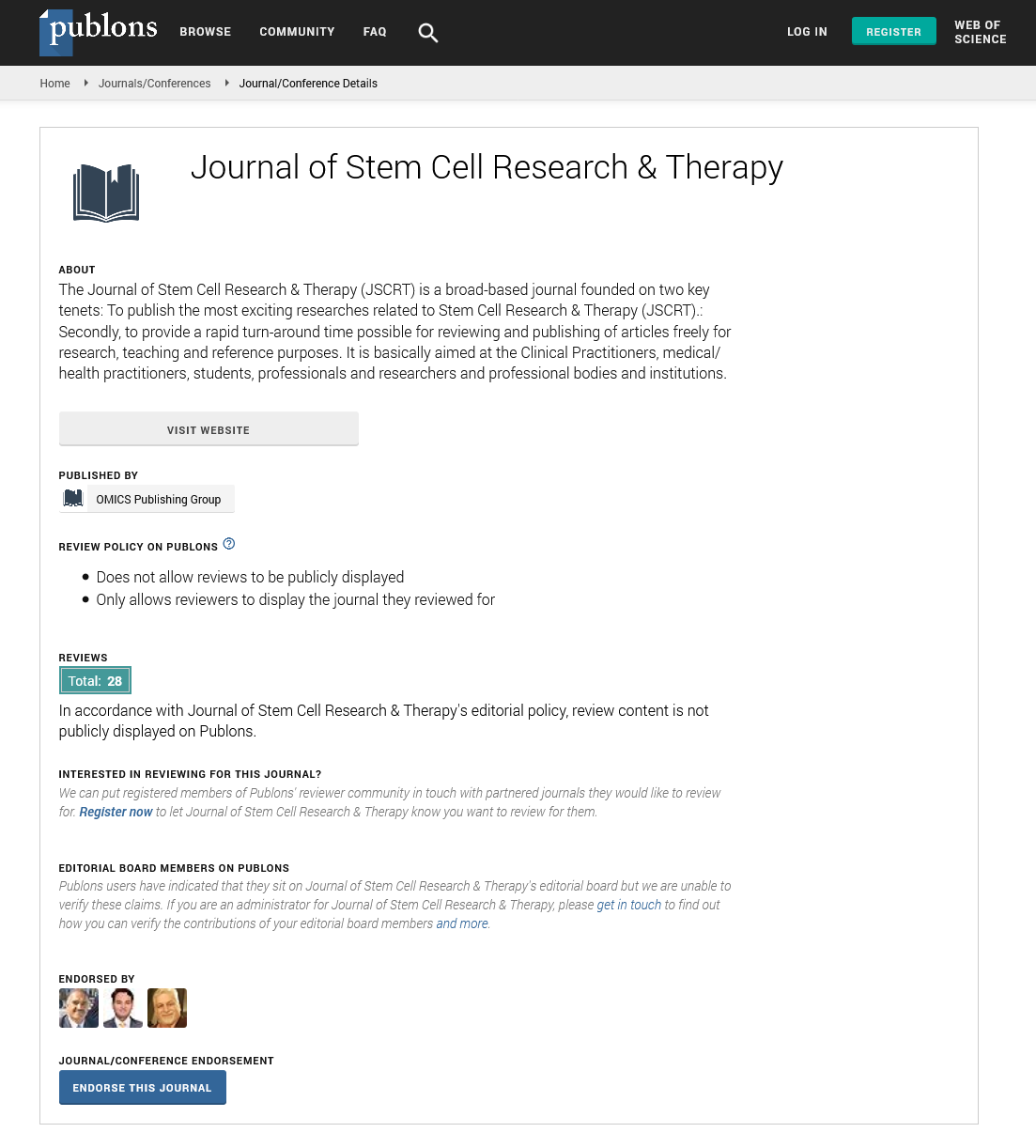Indexed In
- Open J Gate
- Genamics JournalSeek
- Academic Keys
- JournalTOCs
- China National Knowledge Infrastructure (CNKI)
- Ulrich's Periodicals Directory
- RefSeek
- Hamdard University
- EBSCO A-Z
- Directory of Abstract Indexing for Journals
- OCLC- WorldCat
- Publons
- Geneva Foundation for Medical Education and Research
- Euro Pub
- Google Scholar
Useful Links
Share This Page
Journal Flyer

Open Access Journals
- Agri and Aquaculture
- Biochemistry
- Bioinformatics & Systems Biology
- Business & Management
- Chemistry
- Clinical Sciences
- Engineering
- Food & Nutrition
- General Science
- Genetics & Molecular Biology
- Immunology & Microbiology
- Medical Sciences
- Neuroscience & Psychology
- Nursing & Health Care
- Pharmaceutical Sciences
Mesenchymal stem cell biology and therapy after ionizing irradiation and wound trauma
5th International Conference and Exhibition on Cell and Gene Therapy
May 19-21, 2016 San Antonio, USA
Juliann G Kiang and Joan T Smith
Uniformed Services University (USUHS), USA
Scientific Tracks Abstracts: J Stem Cell Res Ther
Abstract:
Ionizing radiation induces mortality that can be further increased by ionizing radiation followed by non-lethal trauma insult caused by penetrating wounds, burns, blunt trauma, hemorrhage, or chemical exposures. The enhancement is mediated partly by activation of inducible nitric oxide synthase (iNOS) pathway, TRL4/NF-κB axes, cytokines increases, bacterial infection, and ATP loss. A promising therapeutic regimen for managing radiation combined with trauma (CI) is transfusion with bone marrow-derived mesenchymal stem cells (BMSCs). In a mouse model, BMSCs were collected from the femur bone marrow of B6D2F1/J mice, isolated using a protocol adapted from STEMCELL Technologies Inc. The cells were expanded and cultivated in hypoxic conditions for 28 days in MESENCULT medium. Using flow cytometry and immunofluorescence imaging, the cells were identified by BMSC-positive markers: CD44, SCA-1, and STRO-1 with colonies formed. B6D2F1/J mice were exposed to 9.25 Gy 60Co-γ photon radiation (0.4 Gy/min) followed by a 15% total body skin-wound trauma. These mice received a single injection of 3x106 BMSCs per mouse 24 hr later. As a result, BMSCs treatment significantly improved mouse 30-day survival by 30% above the vehicle group, accelerated wound healing rate, and increased bone marrow cell recovery. In ex vivo studies, radiation at 4 Gy or 6 Gy significantly decreased BMSC proliferation. Pretreatment with either AKT inhibitor or p38-MAPK inhibitor but not JNK inhibitor blocked the reduction, suggesting radiation-induced BMSC death is mediated by AKT and p38-MAPK. (Supported by NIH/NIAID YI-AI-5045-04 and AFRRI 33529. The views expressed do not necessarily represent NIH, AFRRI, USUHS, or US DoD).
Biography :
Juliann G Kiang completed her PhD and Postdoctoral studies at the University of California at Berkeley. She is Professor of Radiation Biology at USUHS and Principal Investigator at AFRRI. She is an inventor and serves as Editorial Board Member of reputed journals. She has published more than 140 papers in reputed journals and held patents. Among all awards, she receives the Research and Development Achievement Award from the US Department of Army. She is a US DoD STEM model. She is the first to describe the skin-wound amplifies iNOS activation, cytokine concentrations, and sepsis after ionizing irradiation.
Email: juliann.kiang@usuhs.edu

